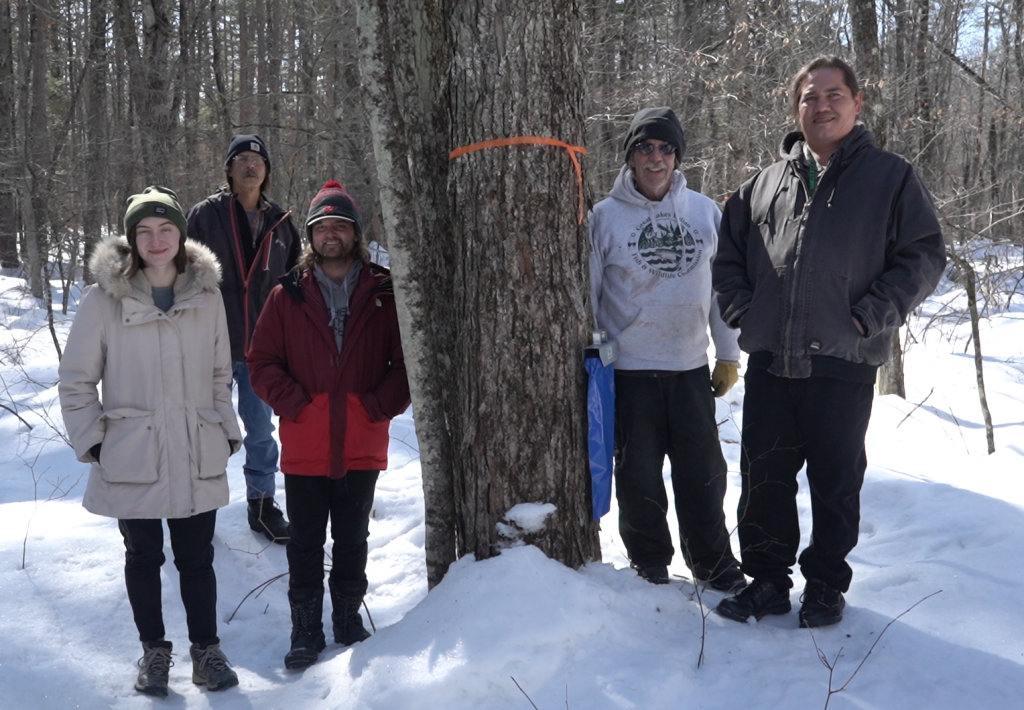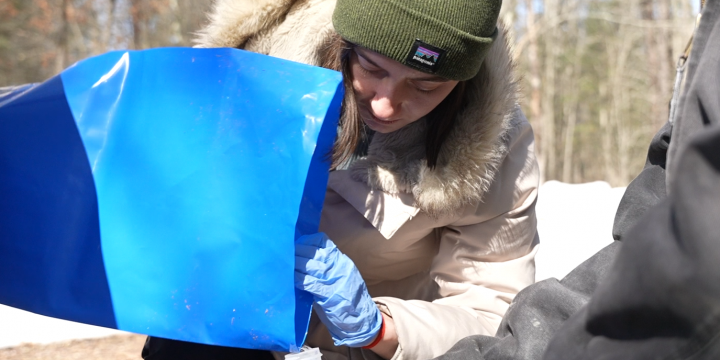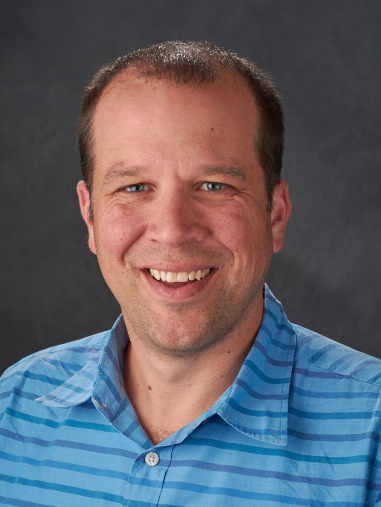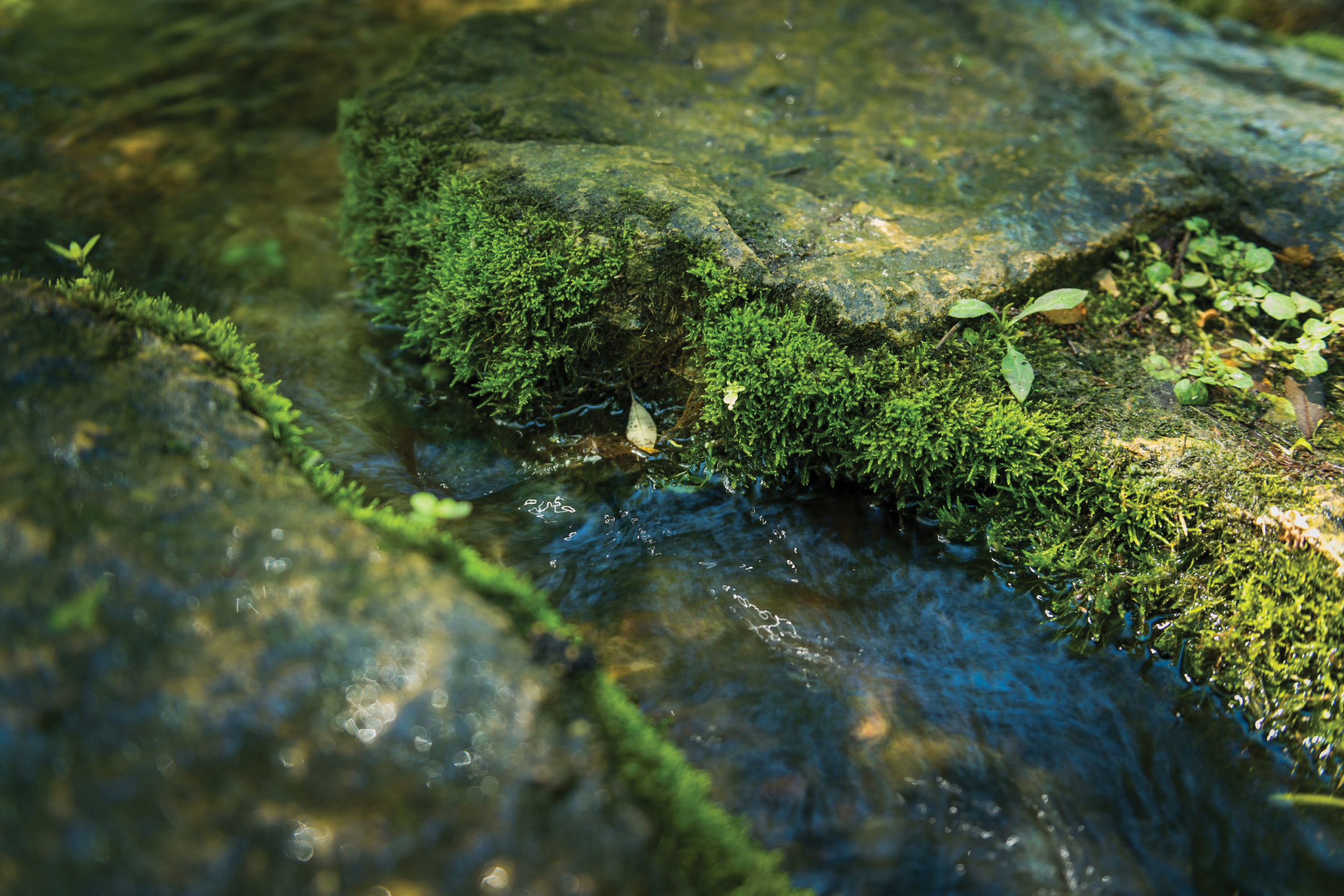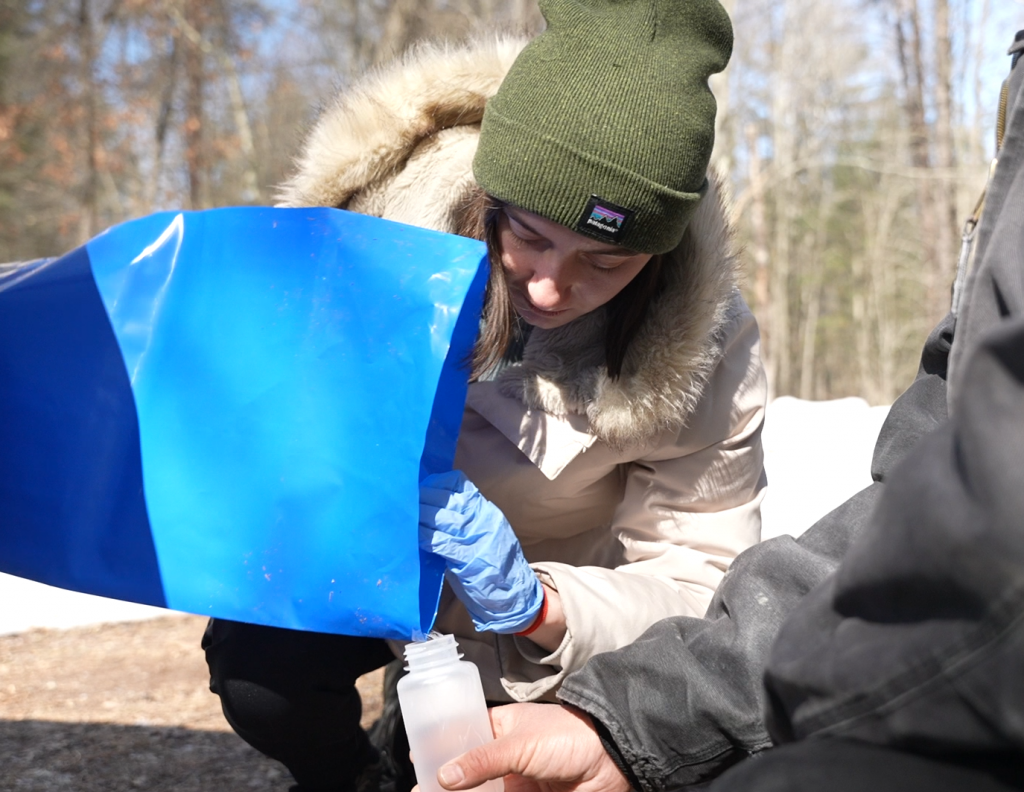
April 3, 2023
By Marie Zhuikov
When Jonathan Gilbert, director of biological services with the Great Lakes Indian Fish and Wildlife Commission, received a report about levels of PFAS (per- and poly-fluoroalkyl substances) in wolves taken during the 2021 hunting season in Wisconsin, he was flummoxed. The scientific report contained terms and measurements that he, even as a biologist, didn’t understand. Gilbert’s quest for answers led to a larger project that is testing maple syrup, walleyes and lake water for PFAS in areas of the Midwest where Ojibwe tribal members harvest food.
During the wolf season, hunters volunteered their wolf remains to GLIFWC for PFAS testing. Gilbert said about 40% of the wolves had detectable levels of these chemicals. He was given Gavin Dehnert’s name as someone who could help answer his questions about the PFAS report. Dehnert, an emerging contaminants scientist, specializes in PFAS. Dehnert works for Wisconsin Sea Grant, a sister agency to the University of Wisconsin Water Resources Institute (WRI).
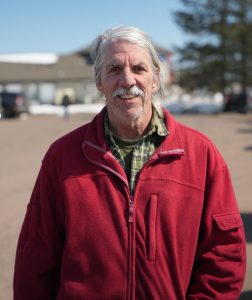
“So, I called him up and we had a nice conversation and he answered all my questions and educated me quite a bit on this,” Gilbert said.
Gilbert needed to present the wolf data to the Voigt Intertribal Task Force – a group composed of 10 of the 11 Ojibwe tribes that harvest from Ceded Territories in parts of Minnesota, Wisconsin and Michigan. The task force ensures safe harvest limits and is advised by GLIFWC. Gilbert invited Dehnert to attend the meeting.
Dehnert said, “We spent probably two to three hours just listening to the questions they had, concerns they had – big questions they were really hoping to answer.” Those questions involved PFAS levels in fish, wild rice, and maple syrup and other things tribal members harvest on a regular basis.
“Gavin kept saying, ‘Well, we don’t know, we don’t know.’ But he took what he heard there, and he wrote up a grant proposal to test the waters in rice lakes and in walleye lakes, and to test the sap of maple trees. That’s exactly what the tribes were telling him they were really concerned about,” Gilbert said.
The three-year tribally driven project, “Quantifying PFAS bioaccumulation and health impacts on economically important plants and animals associated with aquatic ecosystems in Ceded Territories,” was recently funded by the U.S. Geological Survey’s Water Resources Research Act Program, the same program through which WRI is funded.
The project has three goals: 1) Assess aquatic environments for PFAS contamination in the Ceded Territories, 2) Determine the accumulation of PFAS in different plants and animals and 3) Understand the health impacts from PFAS exposure. In addition to Dehnert and Gilbert, the project involves Emily Cornelius Ruhs with the University of Chicago, Sean Strom with the Wisconsin Department of Natural Resources, and Christine Custer and Robert Flynn with USGS.
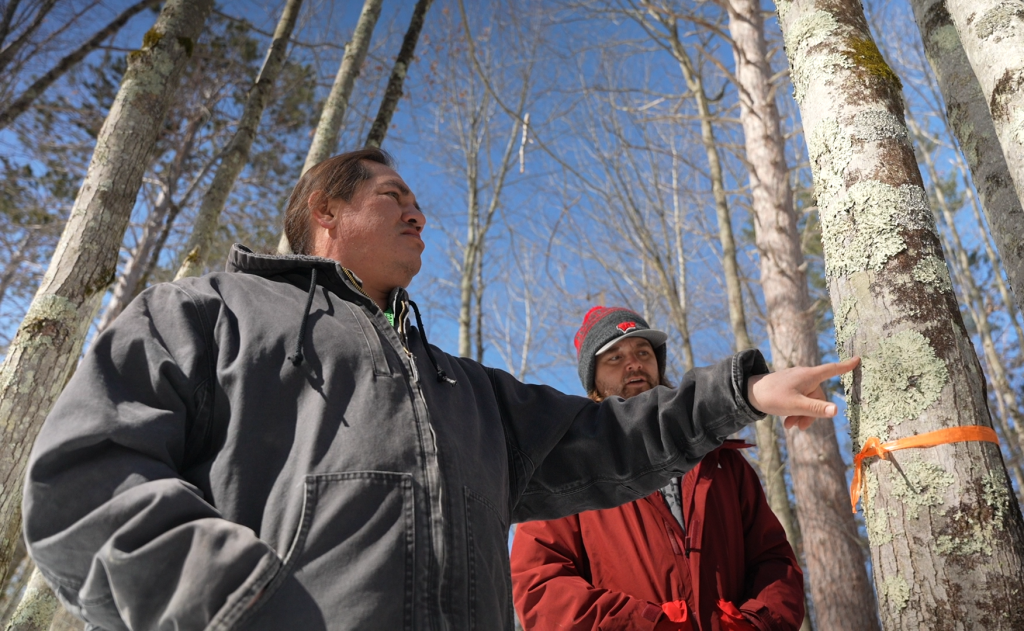
Dehnert said that part one of the project will explore lakes where there’s high harvests of walleye and other fish species and wild rice in Ceded Territories. Researchers will look for the presence of PFAS and determine the levels.
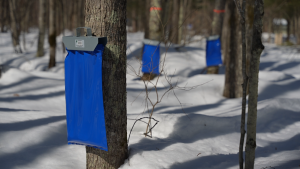
Part two involves understanding the bioaccumulation of PFAS in harvestable goods. “If we know that it’s in the water source where these walleye or wild rice are living, we want to be able to have some sort of correlation between how much PFAS is in the lake water and then how much is then getting into the fish and wild rice,” Dehnert said. Gilbert stressed that they don’t know how much PFAS moves from the water into fish and plants. They will also test vats of maple sap harvested by tribal members.
Part three will look at impacts on organisms that live in the aquatic environments, focusing on tree swallows. This part, led by Ruhs, will explore how PFAS can impact the immune function of tree swallows in different life stages, from nestlings to adults. The swallows are considered an indicator species for contaminated water because they feed near their nesting area almost solely on aquatic insects. Researchers will take blood samples from the birds and look at white blood cell count and antibodies.
Part one will begin this spring with sampling of maple sap and lake water in 25 lakes.
Dehnert is looking forward to the project.
“It’s not focusing on just science for science. There’s a true actionable side to it. That was why we chose the plants and animals that were highly harvested by these tribes. If you’re finding high concentrations of PFAS in these types of harvestable goods, they are going to disproportionately impact the tribes because they are relying on them for their sustainability and food consumption. Sometimes in science people might look at different plants and animals that don’t really have a cultural tie. So that, to me, has always been why we got so excited about this project,” he said.
